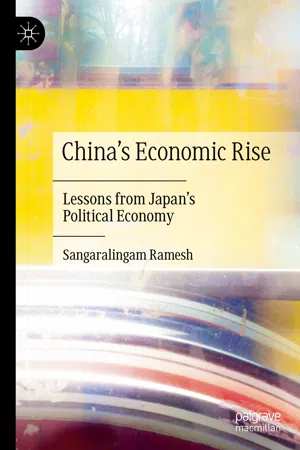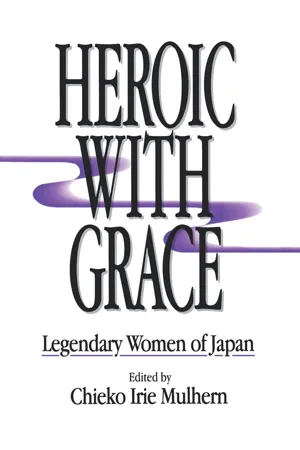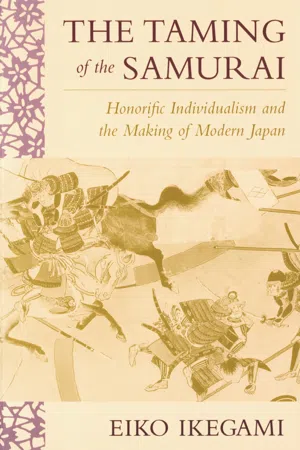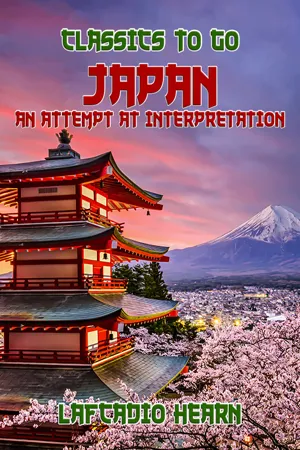History
Minamoto no Yoritomo
Minamoto no Yoritomo was a Japanese warrior and the founder of the Kamakura shogunate, which marked the beginning of the feudal era in Japan. He played a pivotal role in establishing the shogunate system, consolidating power, and centralizing authority in the hands of the military. Yoritomo's leadership significantly influenced the political landscape of medieval Japan.
Written by Perlego with AI-assistance
5 Key excerpts on "Minamoto no Yoritomo"
- eBook - ePub
China's Economic Rise
Lessons from Japan's Political Economy
- Sangaralingam Ramesh(Author)
- 2020(Publication Date)
- Palgrave Macmillan(Publisher)
made use of the Heian Period dual system of governance, by side lining the aristocracy and the Emperor to religious duties in Kyoto while running the country from his powerbase in Kamakura as Shogun. This title, Yoritomo, was bestowed by the imperial court in 1192 AD recognising his authority as head of the Bakufu or military government of Japan. However, while the Bakufu nominally had more power than the imperial court, both systems of power charted their own course until there was a conflict between the two in 1221 AD when the Bakufu finally won its ascendancy over the Emperor and the imperial court.The aftermath of the Gempei War of 1180 AD to 1185 AD left several problems for the founding father, Minamoto Yoritomo , of the Kamakura Bakufu to solve.14 The first problem was to bring peace and stability to the country. The second problem was to strike a balance between the needs of the aristocracy in the imperial capital of Kyoto and the needs of the rising class of warriors in Japan ’s provinces.15 The third problem was how to enrich but control the warriors who had helped to facilitate the victory for Yoritomo while achieving a balance with the aristocracy and the imperial court in Kyoto. To achieve a solution to these problems at the same time, Yoritomo devised two key innovative solutions.16 Firstly, the administrative structure of the country was split in such a way that the imperial court in Kyoto and the Bakufu would have responsibility for managing different areas of interest to the Japanese economy . In this case, the Bakufu would be responsible for its own citizens, whereas the imperial court in Kyoto would be responsible for matters associated with land rights.17 Furthermore, Bakufu warrior or officer types were either the Shugo or the Jito . The main business of the Bakufu was to resolve legal disputes which revolved around the Jito.18 In order to achieve a resolution of legal disputes, the Bakufu developed a robust legal system which was to become the second key innovation of the Kamakura period.19 Legal problems arose with the Jito because while they were administrators for the Bakufu and enjoyed certain privileges income , a home and authority, they were immune from the disciplinary authority of those who administered the land, the Shoen .20 However, the Bakufu would have encouraged lawlessness in the country from its own officials and warriors had it not accepted and adjudicated legal complaints brought against them by offended parties.21 Therefore, the application of the principle of impartiality and the utilisation of a robust judicial system represented the cornerstone of governance for the Kamakura Bakufu.22 However, the state of this governance was impacted in 1221 AD with the Jokyu War . This was especially in the context of the dual administrative structure of Kyoto and the Bakufu as well as the judiciary system.23 Moreover, the Jokyu War also resulted in the unequal distribution of warriors between the west and the east of Japan, and the landowning elite gaining an upper hand over the aristocracy and the imperial court in Kyoto.24 The death of Minamoto Yoritomo led to a decline in the fortunes of the Minamoto clan.25 The third Minamoto Shogun was assassinated and replaced as Regent by a member of the Hojo clan.26 The latter realised that the title of Shogun ‘belonged’ to the Minamoto clan and did not use it but in its place used the title of Regent. In this case, the Shogun was now in between the imperial court and the Regent from the Hojo clan and as a result was a puppet to the Hojo clan who maintained their grip on the Regency until the end of the Kamakura period in 1333 AD.27 The military government of Japan was then under the direct control of the Hojo Regency from 1203 AD to 1333 AD, the period encompassing the years 1274 AD and 1281 AD in which the Mongols of the Yuan dynasty of China tried to invade and conquer Japan.28 - eBook - ePub
The Heart of the Warrior
Origins and Religious Background of the Samurai System in Feudal Japan
- Catharina Blomberg(Author)
- 2013(Publication Date)
- Routledge(Publisher)
genbuku , (coming of age) ceremony in a shrine dedicated to Hachiman. In the minds of the general public, however, the name was considered to refer to his prodigious feats as a warrior, performed from an early age. Their services to the Imperial court earned the Minamoto high government offices and very considerable holdings of land, and their long and strenuous campaigns, especially in the north against the Ainu, established firm bonds between the leaders of the clan and the warriors in the provinces under their control. The key to power lay in the hands of the provincial warriors by the twelfth century, and here the Minamoto had the edge over their rivals, the Taira, whose power was concentrated in the capital and the neighbouring provinces.The Minamoto clan had been established in Kamakura for over a century before the Gempei War, but it was a stroke of genius on the part of Minamoto Yoritomo to set up his Bakufu (literally ‘Military Headquarters’) there, far removed from the Imperial capital and its atmosphere, rife with intrigue, Yoritomo’s new feudal system, with himself as Shōgun at the head, distinguished between two categories of warriors. The go-kenin were the direct vassals of the Shōgun, and controlled by the Samurai Dokoro (Bureau of Samurai Affairs). Some had been hereditary retainers of the Minamoto for generations, but there were also newly recruited go-kenin . The other category consisted of bushi who remained vassals of their old clan and did not become attached to the Minamoto. Yoritomo established three boards of government at Kamakura. The centre of administration was the Kumonjo (Bureau of Public Documents) which was later renamed Mandokoro (Bureau of Government) and which, following the death of Yoritomo, was run for a quarter of a century by his formidable widow, Hōjō Masako, and the shrewd statesman Ōe Hiromoto. The Samurai Dokoro was in charge of official appointments, and the early Kamakura Bakufu made a point of selecting the holders of official posts according to merit. Where the common people was concerned the provincial governors retained their judicial functions, but for the bushia special court, the Monjushō - eBook - ePub
Heroic with Grace
Legendary Women of Japan
- Chieko Irie Mulhern(Author)
- 2015(Publication Date)
- Routledge(Publisher)
Yoritomo had no choice but to plan a third trip to the capital, hoping that a show of force would help him regain some of the power he had lost. There is also evidence that Yoritomo had not entirely given up his plan of getting a daughter into the palace as imperial consort. His aims now centered upon the thirteen-year-old Sanman.Dowager Nun
Before he had time to start preparations for his planned march on the capital, Yoritomo died. The manner of his demise was ironic for a man who was the leader of a military government and the head of the Minamoto clan long renowned as the horse-riding land force: he fell off his horse. When he could not be revived after the fall, he was immediately brought home to Kamakura. He never regained consciousness and breathed his last in early 1199.The accident occurred after the opening ceremony for a bridge on the Sagami River commemorating a late sister of Masako’s. The shogun’s untimely death originating in such a public event gave rise to rumors that he had been assassinated. Legend has it that the spirits of Yoshitsune and the Heike noblemen he had destroyed in his rise to power appeared to him, including the ghost of the boy Emperor Antoku; Yoritomo then fell sick and died soon after, not of ordinary illness but by the curse of these spirits.19Another legend popular in Tokugawa times, over five hundred years later, holds Masako responsible for her husband’s death: She must have become so obsessed with jealousy at his philanderings that she lost control of herself. Or, as some versions tell it, her anger and jealousy grew so fierce that her spirit detached itself from her body and haunted Yoritomo to death. Since the Tokugawa shoguns claimed Minamoto descent, popular storytellers, in their effort to vindicate Yoritomo’s seemingly poor horsemanship, blamed someone or other for a variety of plots, from spooking his horse to poisoning Yoritomo. There seems to be little doubt, however, that he died of natural causes, a cerebral hemorrhage. - eBook - ePub
The Taming of the Samurai
Honorific Individualism and the Making of Modern Japan
- Eiko Ikegami(Author)
- 1997(Publication Date)
- Harvard University Press(Publisher)
After defeating the troops of the Taira in 1185, Yoritomo established the first government fully under samurai control, the Kamakura shogunate. 2 His success was facilitated by strong pressures from the eastern samurai bands to legitimate their landholdings. Unlike the Taira regime, Yoritomo refused to be drawn into the imperial political order, and he gradually developed independent governmental institutions in Kamakura at a distance of a dozen days from Kyoto. Yoritomo claimed the highest political authority in the hierarchy of the samurai. To be sure, the continued existence of the imperial court at Kyoto resulted in a dual structure within the medieval Japanese state; therefore, the samurai’s connections with shōen proprietors, usually Kyoto aristocrats or religious institutions protected by the legal code of the imperial court, also continued even after the formal establishment of the new samurai regime. However, after the war of 1221, in which the Kamakura forces defeated the imperial troops, it was clear that the shogunate was the stronger power. The Kamakura regime deliberately located their political capital, Kamakura, a considerable distance from the courtly cultural center of Kyoto. The Kamakura samurai cultivated a fierce pride in their military identity and attempted to overcome their feelings of cultural inferiority. The early development of samurai vassalage, their distinctive form of military alliance, was clearly an important step in the extension of their power base and cultural confidence. On the one hand, the Kamakura samurai strongly admired the aristocratic high culture and often sought to learn the characteristic manners of the aristocracy, such as courtly etiquette and the composition of poetry (waka). The artistic refinement of the emperor’s court attracted the samurai, who did not have such a cultural resource - eBook - ePub
- Lafcadio Hearn(Author)
- 2021(Publication Date)
- Otbebookpublishing(Publisher)
But the Buke could not realize their ambition without a bitter struggle among themselves,—the longest and the fiercest war in Japanese history. The Minamoto and the Taira were both Kuge; both claimed imperial descent. In the early part of the contest the Taira carried all before them; and it seemed that no power could hinder them from exterminating the rival clan. But fortune turned at last in favour of the Minamoto; and at the famous sea-fight of Dan-no-ura, in 1185, the Taira were themselves exterminated.Then began the reign of the Minamoto regents, or rather shogun. I have elsewhere said that the title "shogun" originally signified, as did the Roman military term Imperator, only a commander-in-chief: it now became the title of the supreme ruler de facto, in his double capacity of civil and military sovereign,—the King of kings. From the accession of the Minamoto to power the history of the shogunate—the long history of the military supremacy—really begins; Japan thereafter, down to the present era of Meiji, having really two Emperors: the Heavenly Sovereign, or Deity Incarnate, representing the religion of the race; and the veritable Imperator, who wielded all the powers of the administration. No one sought to occupy by force the throne of the Sun's Succession, whence all authority was at least supposed to be derived. Regent or shogun bowed down before it: divinity could not be usurped.Yet peace did not follow upon the battle of Dan-no-ura: the clan-wars initiated by the great struggle of the Minamoto and the Taira, continued, at irregular intervals, for five centuries more; and the nation remained disintegrated. Nor did the Minamoto long keep the supremacy which they had so dearly won. Deputing their powers to the Hojo family, they were supplanted by the Hojo, just as the Fujiwara had been supplanted by the Taira. Three only of the Minamoto shogun really exercised rule. During the whole of the thirteenth century, and for some time afterwards, the Hojo continued to govern the country; and it is noteworthy that these regents never assumed the title of shogun, but professed to be merely shogunal deputies. Thus a triple-headed government appeared to exist; for the Minamoto kept up a kind of court at Kamakura. But they faded into mere shadows, and are yet remembered by the significant appellation of "Shadow-Shogun," or "Puppet Shogun." There was nothing shadowy, however, about the administration of the Hojo, [—men of immense energy and ability. By them Emperor or shogun could be deposed and banished without scruple; and the helplessness of the shogunate can be inferred from the fact, that the seventh Hojo regent, before deposing the seventh shogun, sent him home in a palanquin, head downwards and heels upwards. Nevertheless the Hojo suffered the phantom-shogunate to linger on, until 1333. Though unscrupulous in their methods, these regents were capable rulers; and proved themselves able to save the country in a great emergency,—the famous invasion attempted by Kublai Khan in 1281. Aided by a fortunate typhoon, which is said to have destroyed the hostile fleet in answer to prayer offered up at the national shrines, the Hojo could repel this invasion. They were less successful in dealing with certain domestic disorders,—especially those fomented by the turbulent Buddhist priesthood. During the thirteenth century, Buddhism had developed into a great military power,—strangely like that church-militant of the European middle ages: the period of soldier-priests and fighting-bishops. The Buddhist monasteries had been converted into fortresses filled with men-at arms; Buddhist menace had more than once carried terror into the sacred seclusion of the imperial court. At an early day, Yoritomo, the far-seeing founder of the Minamoto dynasty, had observed a militant tendency in Buddhism, and had attempted to check it by forbidding all priests and monks either to bear arms, or to maintain armed retainers. But his successors had been careless about enforcing these prohibitions; and the Buddhist military power developed in consequence so rapidly that the shrewdest Hojo were doubtful of their ability to cope with it. Eventually this power proved capable of giving them serious trouble. The ninety-sixth Mikado, Go-Daigo, found courage to revolt against the tyranny of the Hojo; and the Buddhist soldiery took part with him. He was promptly defeated, and banished to the islands of Oki; but his cause was soon espoused by powerful lords, who had long chafed under the despotism of the regency. These assembled their forces, restored the banished Emperor, and combined in a desperate attack upon the regent's capital, Kamakura. The city was stormed and burned; and the last of the Hojo rulers, after a brave but vain defence, performed harakiri. Thus shogunate and regency vanished together, in 1333.
Index pages curate the most relevant extracts from our library of academic textbooks. They’ve been created using an in-house natural language model (NLM), each adding context and meaning to key research topics.
Explore more topic indexes
Explore more topic indexes
1 of 6
Explore more topic indexes
1 of 4




